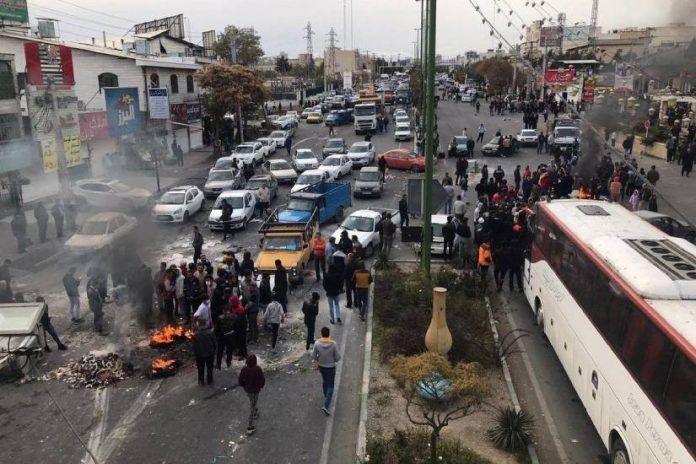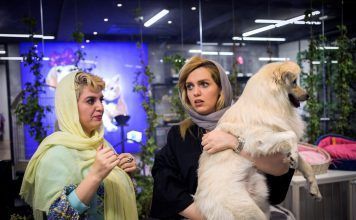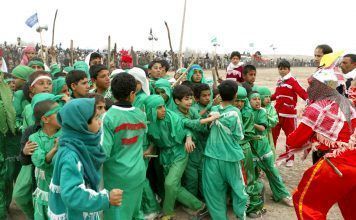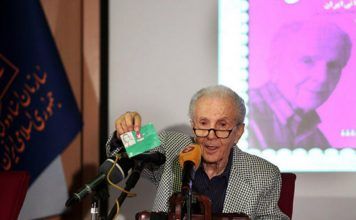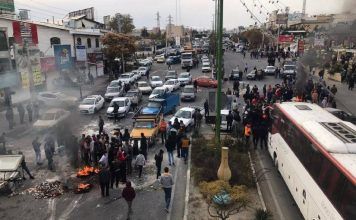Some 230 people died and another 2,000 were injured during the violent nationwide protests over the fuel price hike in October, Mojtaba Zonnour (also spelled Zolnour), a Majlis (Iranian Parliament) deputy representing Qom electoral constituency, has said.
Mr. Zonnour made the comments on the sidelines of a meeting of the National Headquarters for Fighting Coronavirus at the Interior Ministry.
“Every country takes measures that have weaknesses and strengths. They benefit some people and hurt others. The public may oppose these steps,” Zonnour was quoted by the Iranian Students News Agency (ISNA) as saying. “World hegemony took advantage of the situation in October and organized street protests. Foreign media also tried to create a story. The soft overthrow of our governing system has always been part of world hegemony’s overall policy.”
“Initially, people held peaceful demonstrations,” Zonnour, who is the former chairman of the Nuclear Subcommittee of the Majlis’ National Security and Foreign Policy Committee, said. “However, people expect the state to restore law and order when residential properties, government buildings, and police stations are attacked.”
[aesop_image img=”https://kayhanlife.com/wp-content/uploads/2019/02/zolnour.jpg” panorama=”off” alt=”Mojtaba Zolnour.” align=”center” lightbox=”off” captionsrc=”custom” caption=”Mojtaba Zolnour. Source: Kayhan London” captionposition=”left” revealfx=”off” overlay_revealfx=”off”]
According to international human rights organizations, the number of dead and injured in the October protests in Iran was much higher than the official figures.
Amnesty International reported in December 2019 that at least 304 people had died during the unrest.
“About 1,500 people were killed during less than two weeks of unrest that started on Nov. 15. The toll, provided to Reuters by three Iranian interior ministry officials, included at least 17 teenagers and about 400 women and some members of the security forces and police,” Reuters said
Zonnour noted in his remarks that 497 government and private institutions were severely damaged. Also, 230 government cars and another 420 belonging to people were set on fire: “They [the rioters] damaged 569 cars and motorcycles belonging to the law enforcement and security forces. Also, 991 banks and 1,230 gas stations were damaged.”
“Some 2,000 people were injured in the protests. Also, 5,000 members of the security and law enforcement forces were injured, which shows that their actions were purely defensive and not offensive,” Zonnour explained. “Six security officers were martyred. We cannot tolerate even one death or injury. Foreign media reported that 10,000 people had died, which was an utter lie. According to data, 230 died, six of whom were security officers.”
“Close to 7 percent of those who exchanged gunfire with the security forces died. Also, 16 percent of those who attacked military basis and police stations with firearms and cold weapons died,” Zonnour said. “Close to 31 percent of the deaths occurred in public places, including shops, gas stations, banks, and mosques. About 20 percent of those who lost their lives were members of the Basij [volunteer force]. Some 26 percent of those who died during the protests were not among the agitators. It is unclear why they died. For instance, some people were shot in the temple from a distance of three meters.”
“Also, 22 percent of those who died in the protests had criminal records. The Iranian Legal Medicine Organization has provided all the data,” Zonnour noted. “We have no report of anyone being tortured or dying during interrogations. The leaders of the rioters were arrested after the speech by the Supreme Leader Ayatollah Ali Khamenei and blocking the internet. Others were also rounded up. People distanced themselves from the ant-revolution agitators.”
“We must thank the public and respect their concerns. However, all protests should occur within the law so as not to give any excuse to the anti-revolution elements,” Zonnour warned. “The arrests were aimed at calming the situation. Those who did not play a major role in the unrest were later released.”
“It was only after the leader’s speech on the various aspects of the unrest that the General Staff of the Armed Forces, the Iranian Legal Medicine Organization, the Judiciary and the Provincial Security Council got involved in the situation,” Zonnour added. “The authorities agreed to meet with the families of those who lost their lives and give them financial aid. The Supreme Leader ordered that the families of those who used firearms in clashes should not be penalized.”
In comments broadcast on the Iranian state TV at around the same time, the governor of Qods (34 kilometers east of Tehran), Leila Vaseghi, said: “They [protesters] broke the front door and entered the [municipal] building. They opened their jackets and yelled ‘shoot if you can.’ They knew the order to fire had to come from the top. However, we had already given the order. I had told them [the security] to shoot anyone who entered the municipal building.”
According to the families of those killed, the armed security police aimed for people’s heads and hearts.
This article was translated and adapted from Persian by Fardine Hamidi.

